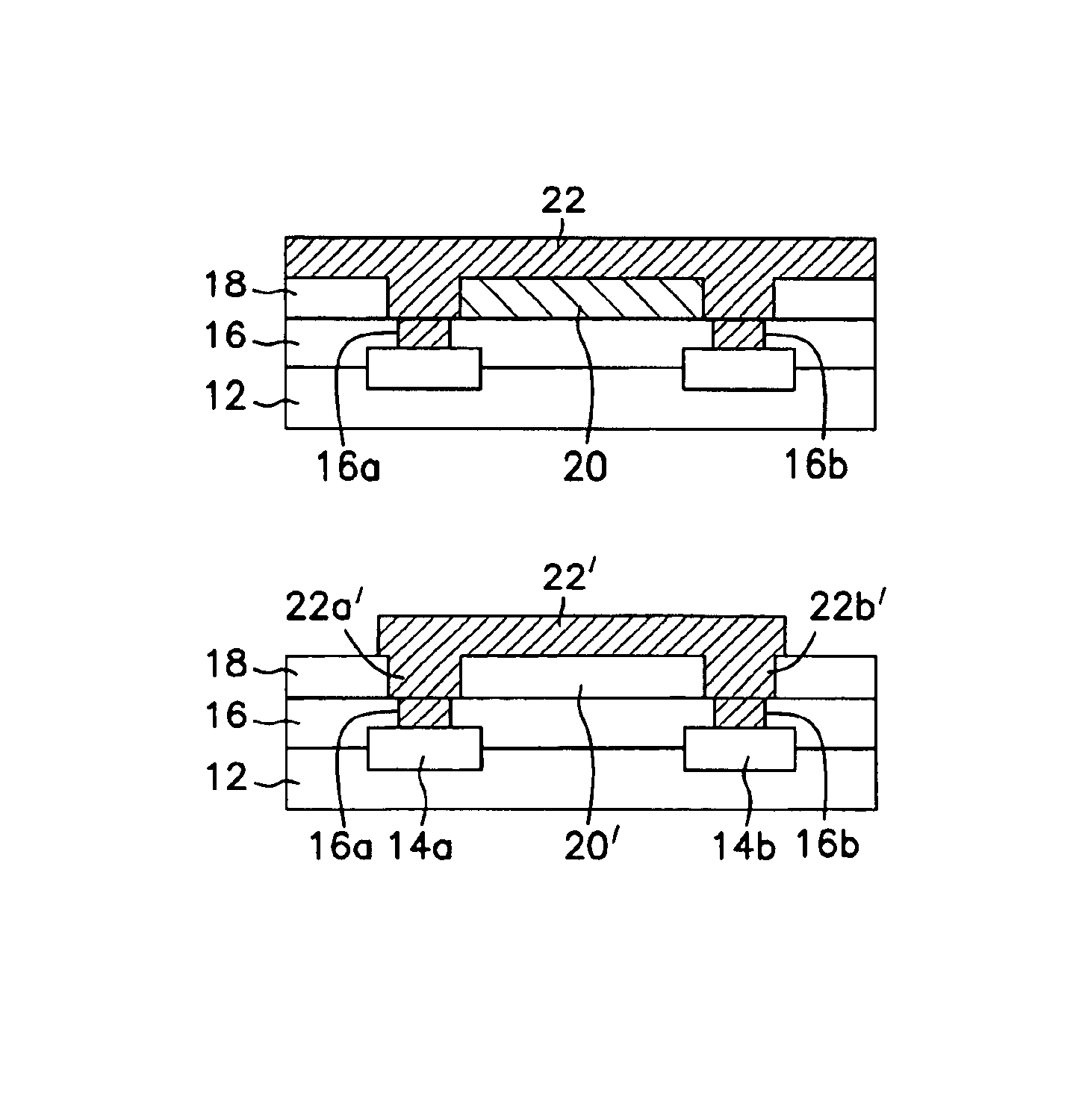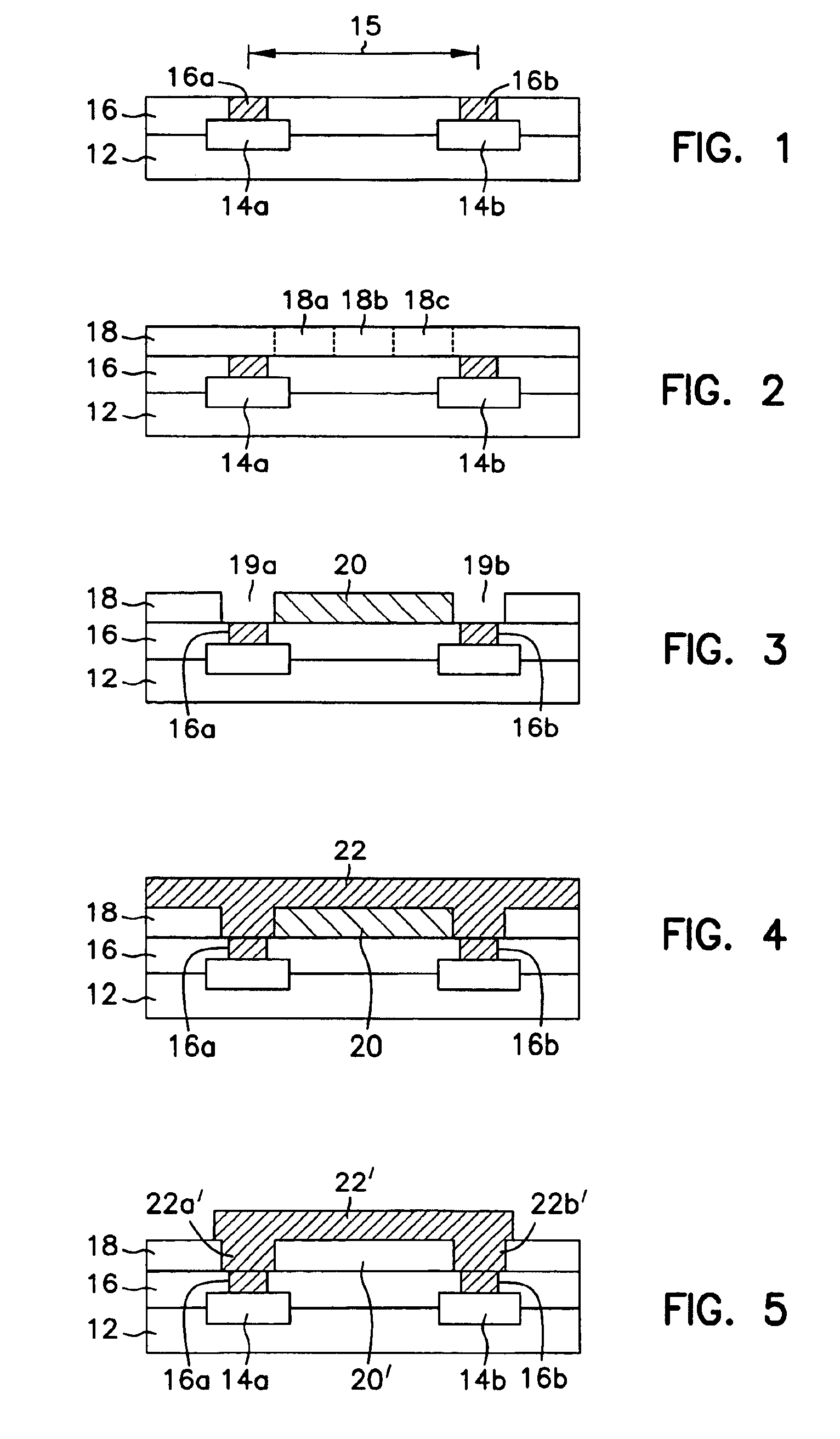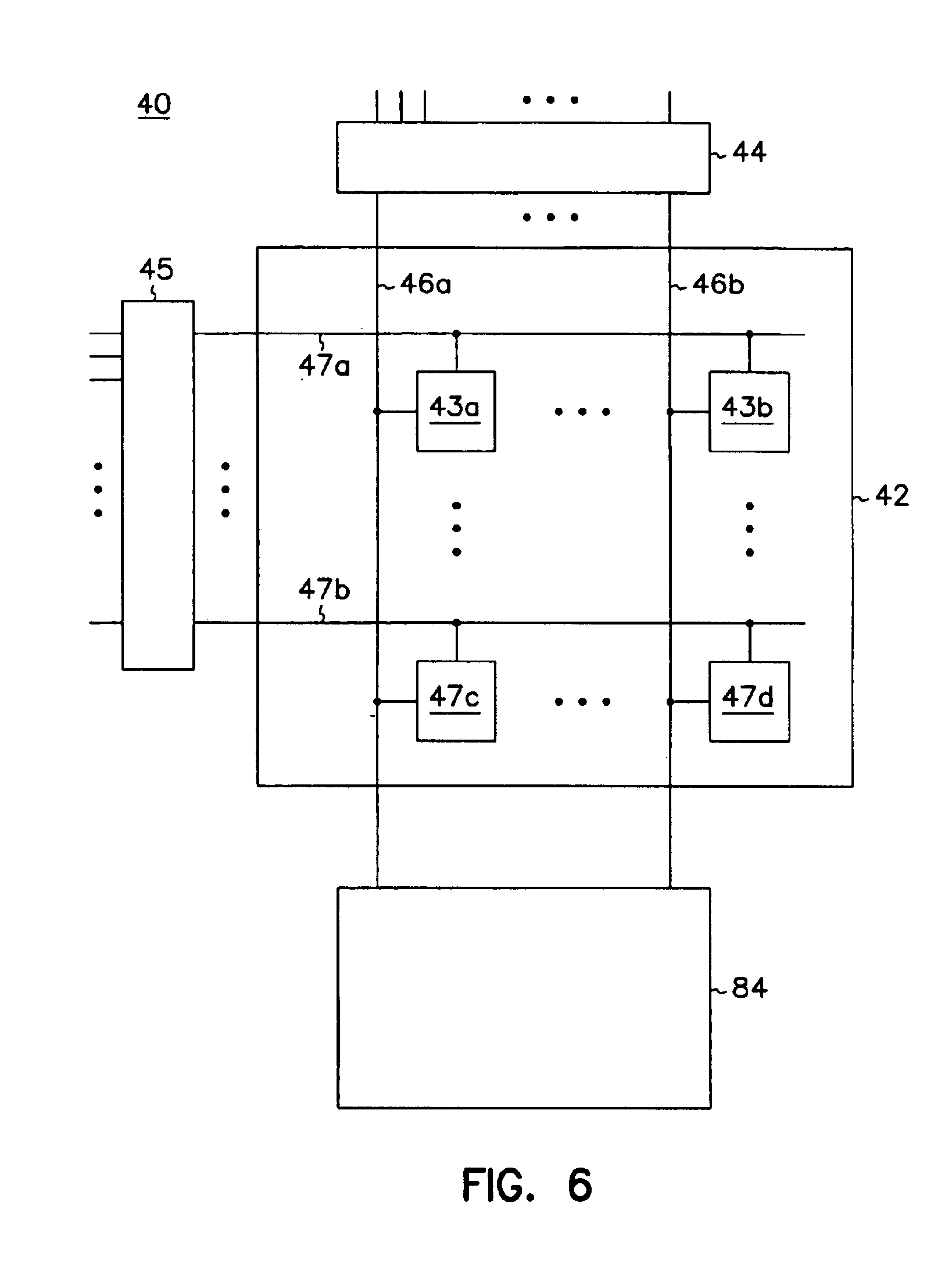Aluminum-beryllium alloys for air bridges
a technology of air bridge and alloy, which is applied in the direction of solid-state devices, semiconductor devices, semiconductor/solid-state device details, etc., can solve the problems of increased capacitance between wires, cross talk, waste of power, etc., and achieves more rigidity and electrical resistance, the effect of superior rigidity and comparable electrical resistan
- Summary
- Abstract
- Description
- Claims
- Application Information
AI Technical Summary
Benefits of technology
Problems solved by technology
Method used
Image
Examples
Embodiment Construction
[0017]The following detailed description, which references and incorporates FIGS. 1-6, describes and illustrates one or more specific embodiments of the invention. These embodiments, offered not to limit but only to exemplify and teach the invention, are shown and described in sufficient detail to enable those skilled in the art to practice the invention. Thus, where appropriate to avoid obscuring the invention, the description may omit certain information known to those of skill in the art.
Definitions
[0018]The term “substrate,” as used herein, encompasses a semiconductor wafer as well as structures having one or more insulative, semi-insulative, conductive, or semiconductive layers and materials. Thus, for example, the term embraces silicon-on-insulator, silicon-on-sapphire, and other advanced structures.
[0019]The term “cavity” as used herein refers to a bounded, three-dimensional region having a dielectric constant different from areas outside the region. Thus, for example, the te...
PUM
| Property | Measurement | Unit |
|---|---|---|
| thickness | aaaaa | aaaaa |
| thickness | aaaaa | aaaaa |
| thickness | aaaaa | aaaaa |
Abstract
Description
Claims
Application Information
 Login to View More
Login to View More - R&D
- Intellectual Property
- Life Sciences
- Materials
- Tech Scout
- Unparalleled Data Quality
- Higher Quality Content
- 60% Fewer Hallucinations
Browse by: Latest US Patents, China's latest patents, Technical Efficacy Thesaurus, Application Domain, Technology Topic, Popular Technical Reports.
© 2025 PatSnap. All rights reserved.Legal|Privacy policy|Modern Slavery Act Transparency Statement|Sitemap|About US| Contact US: help@patsnap.com



